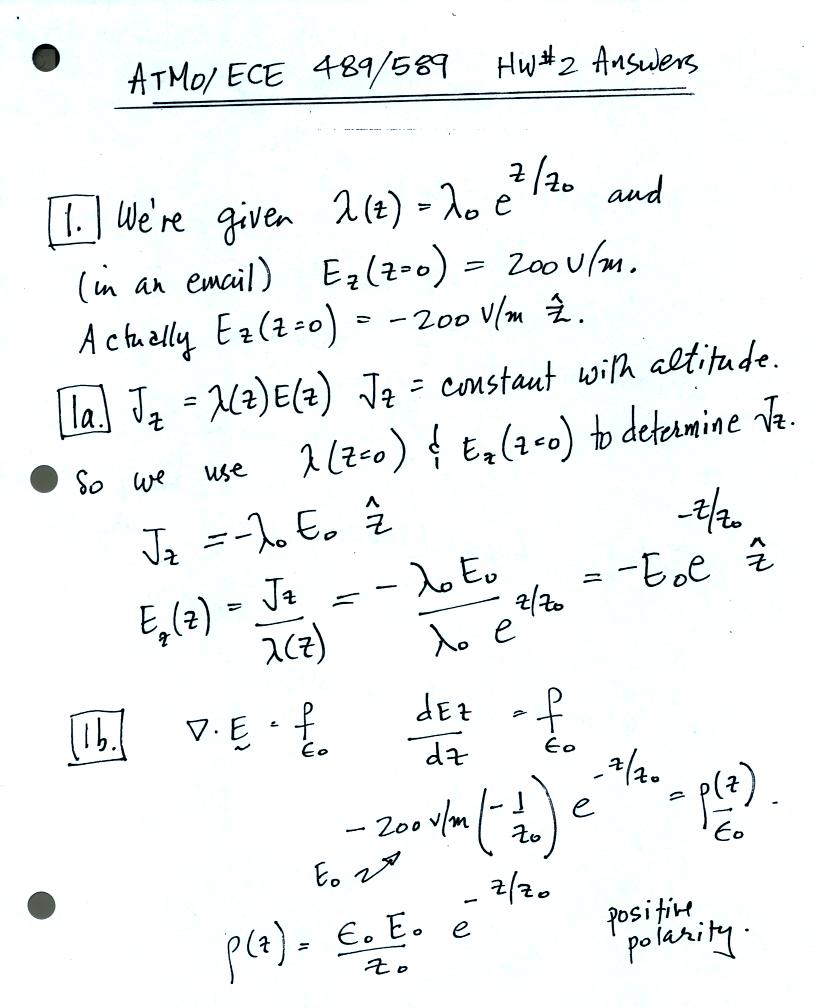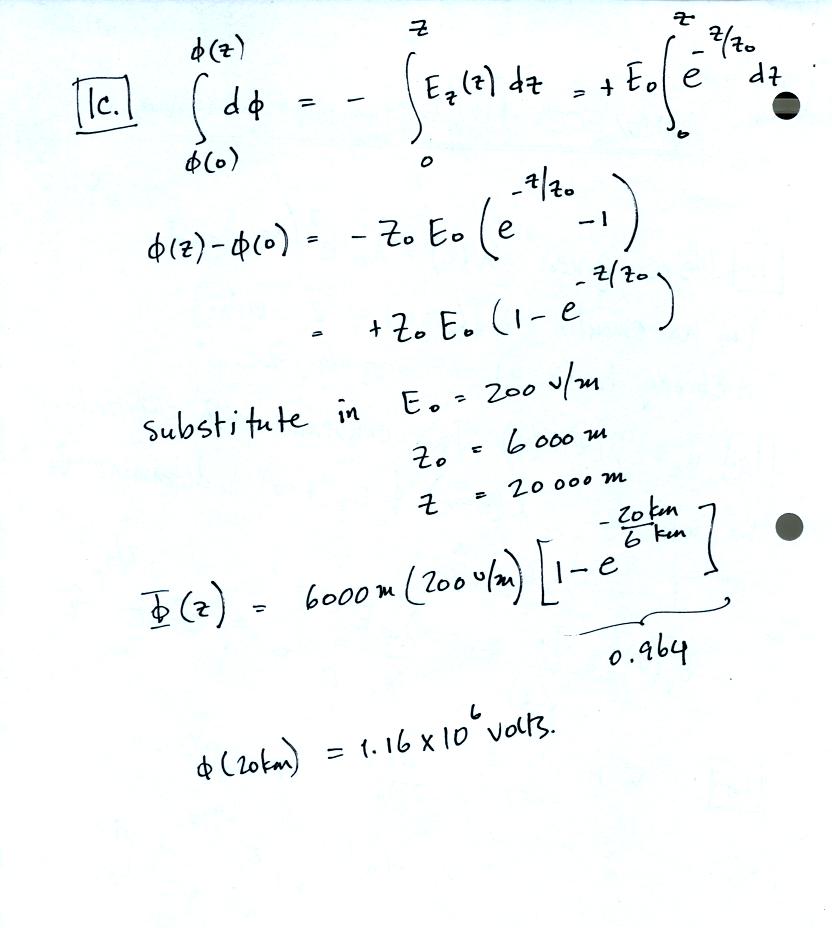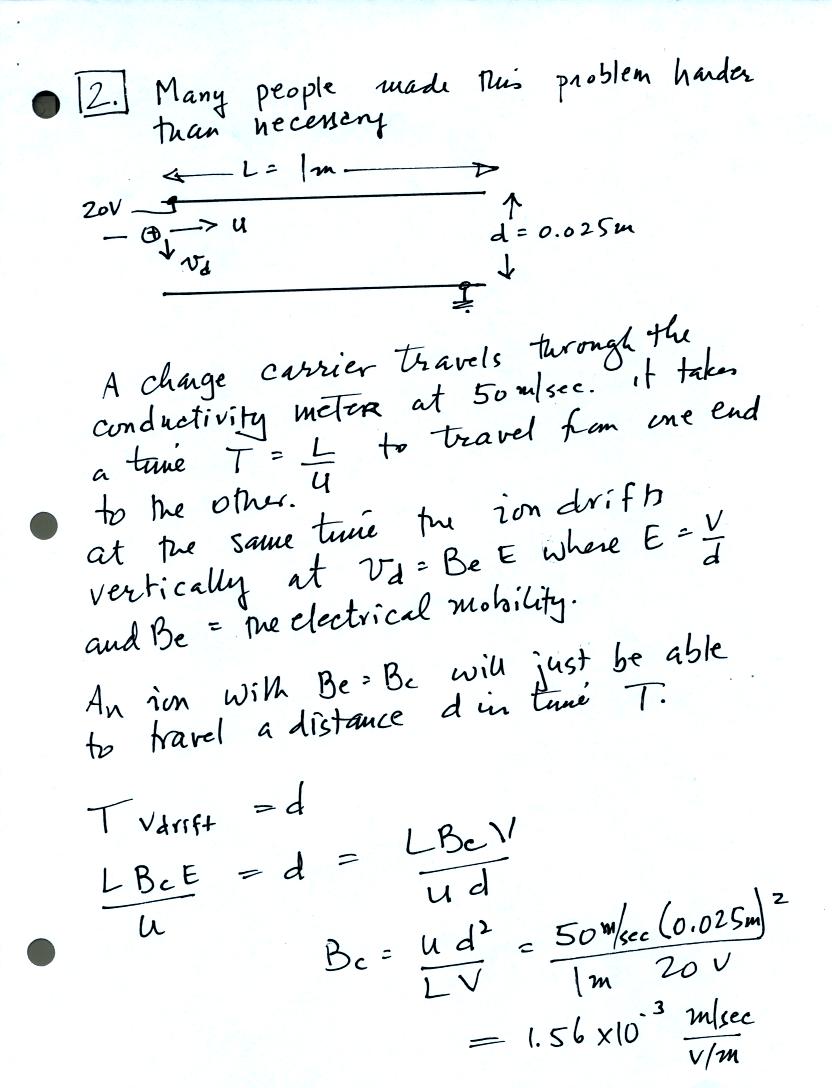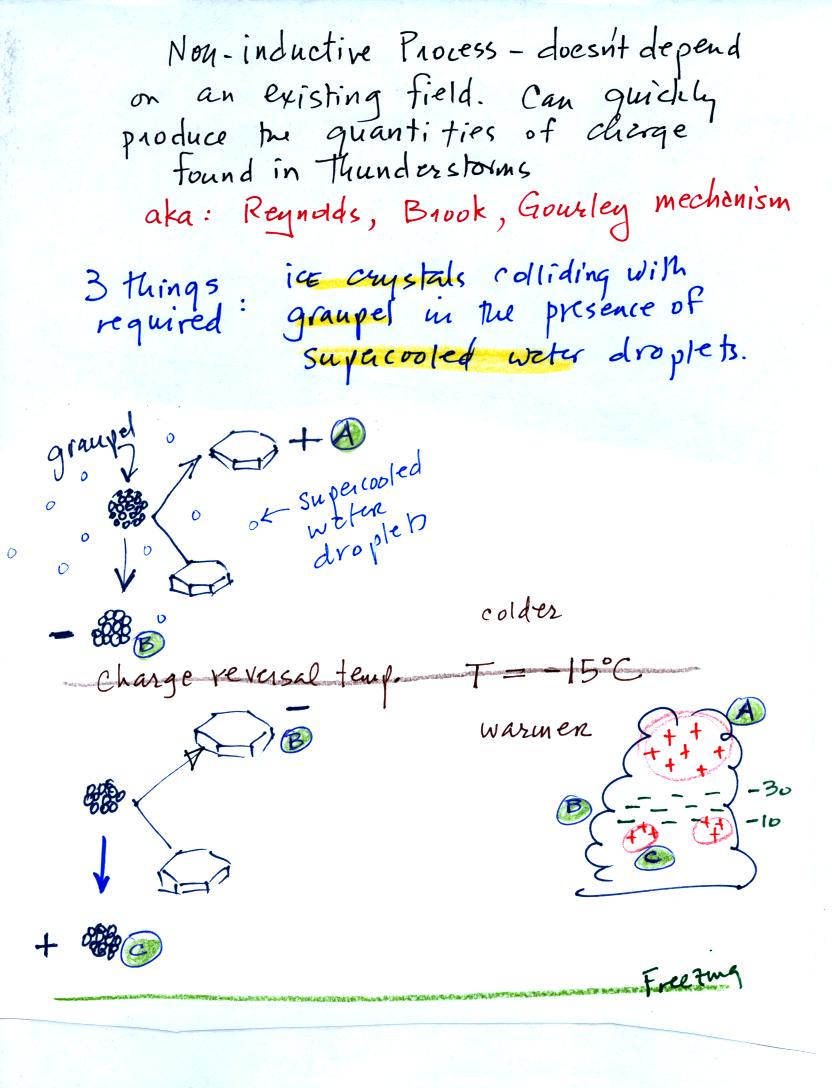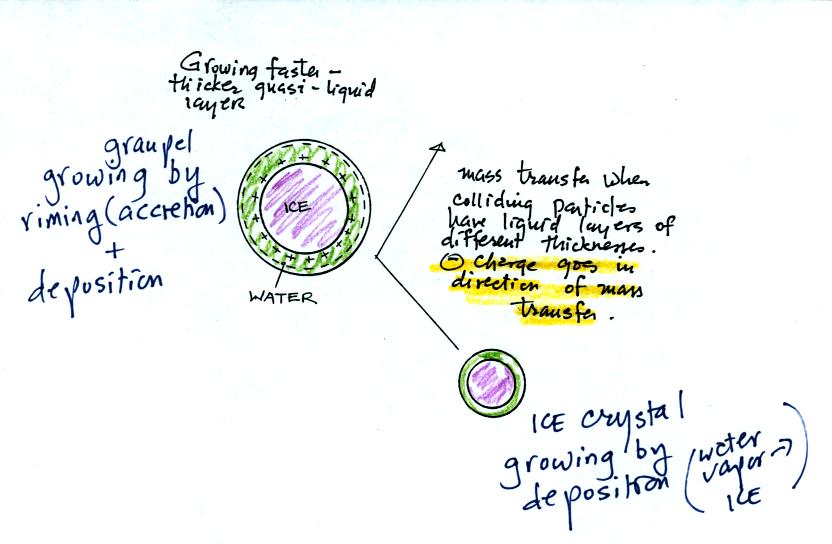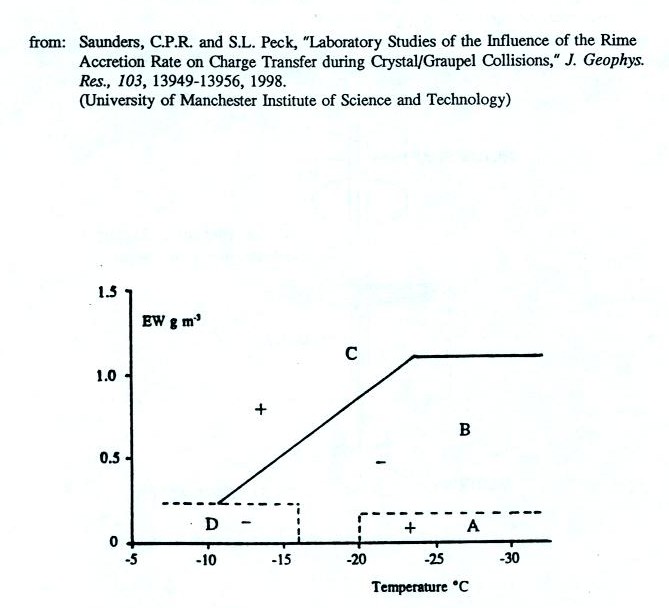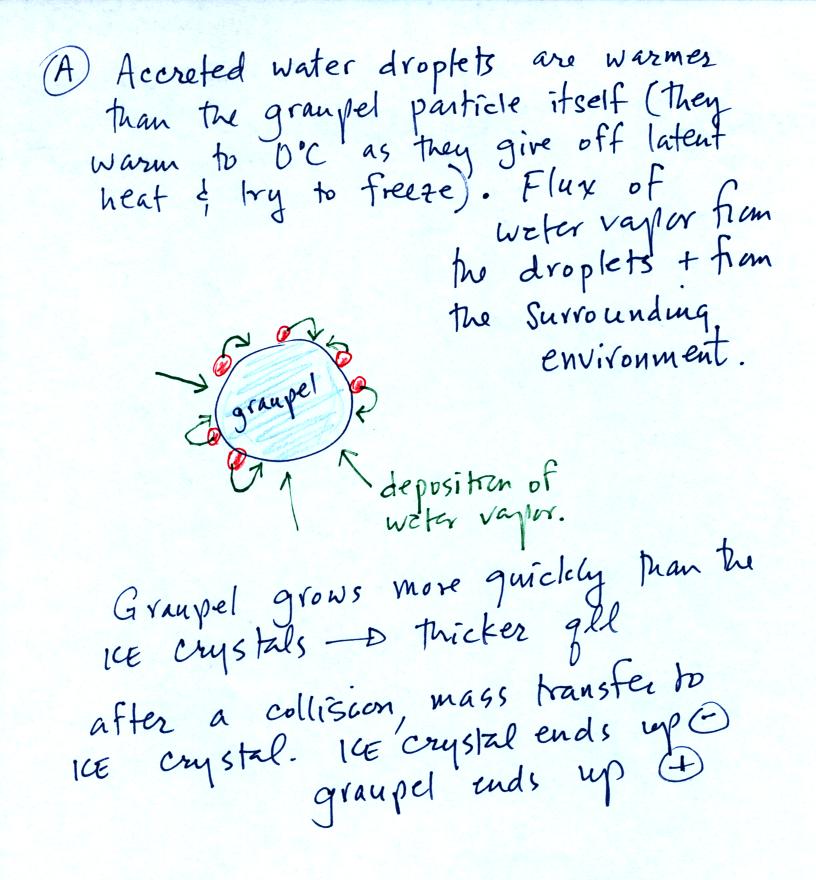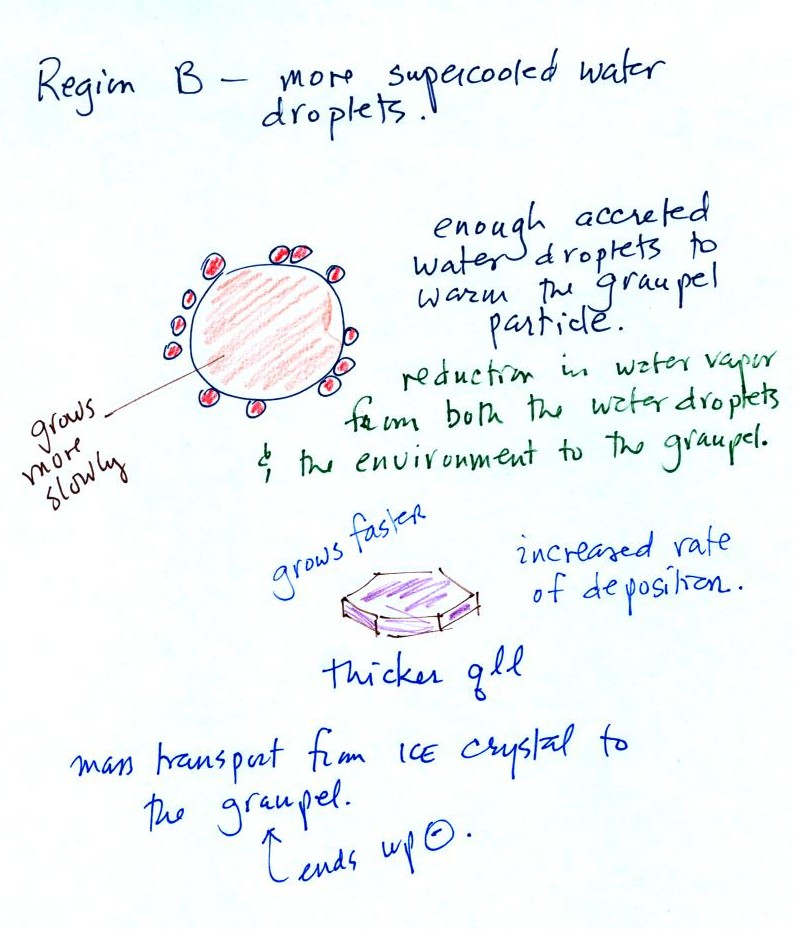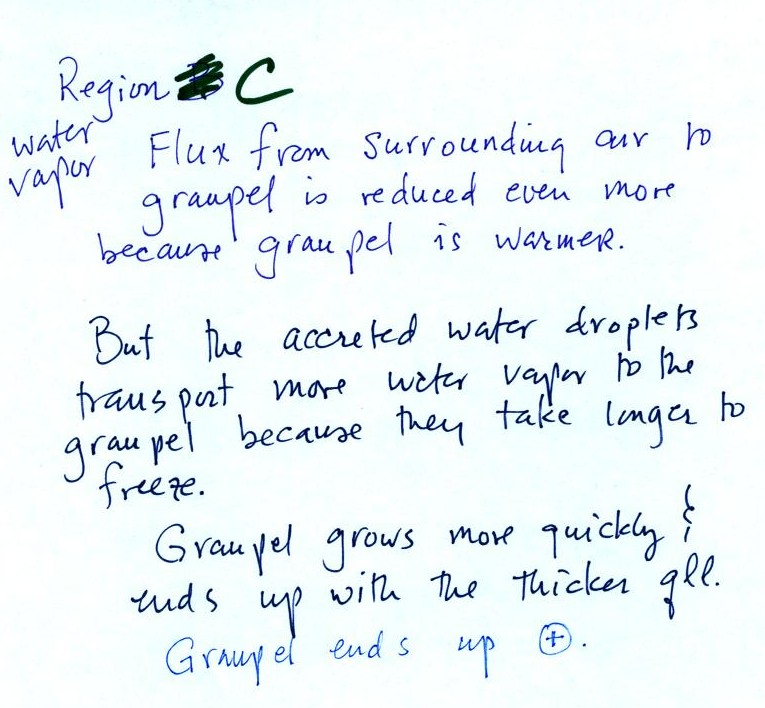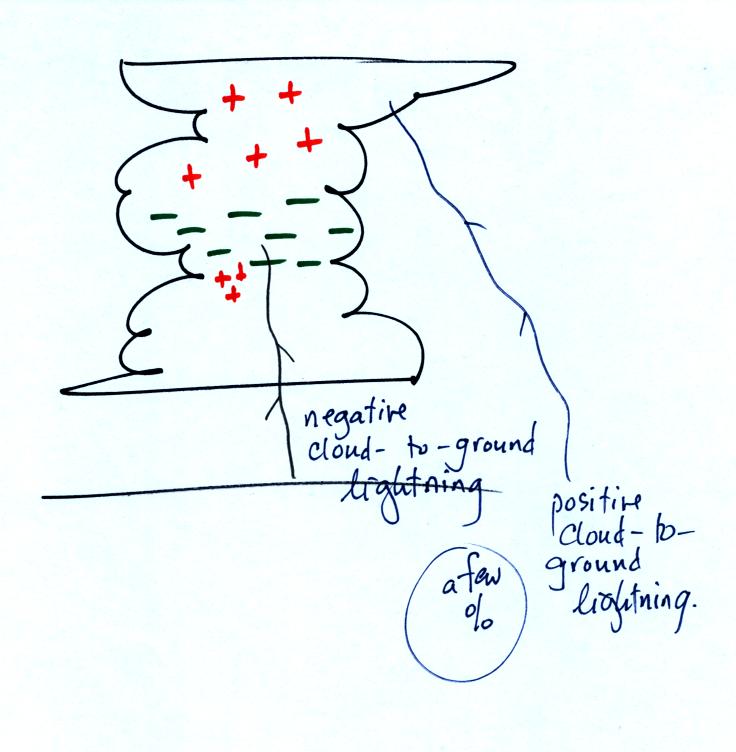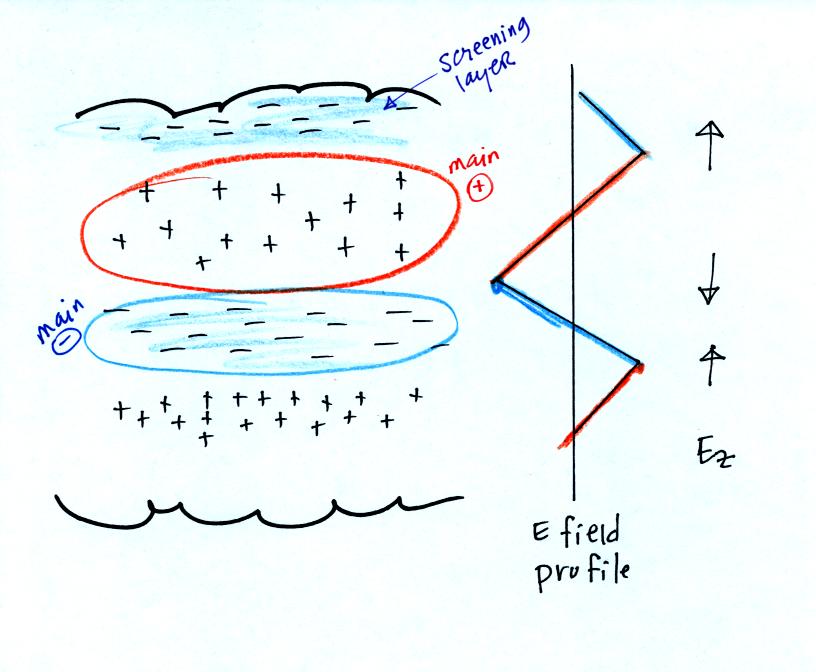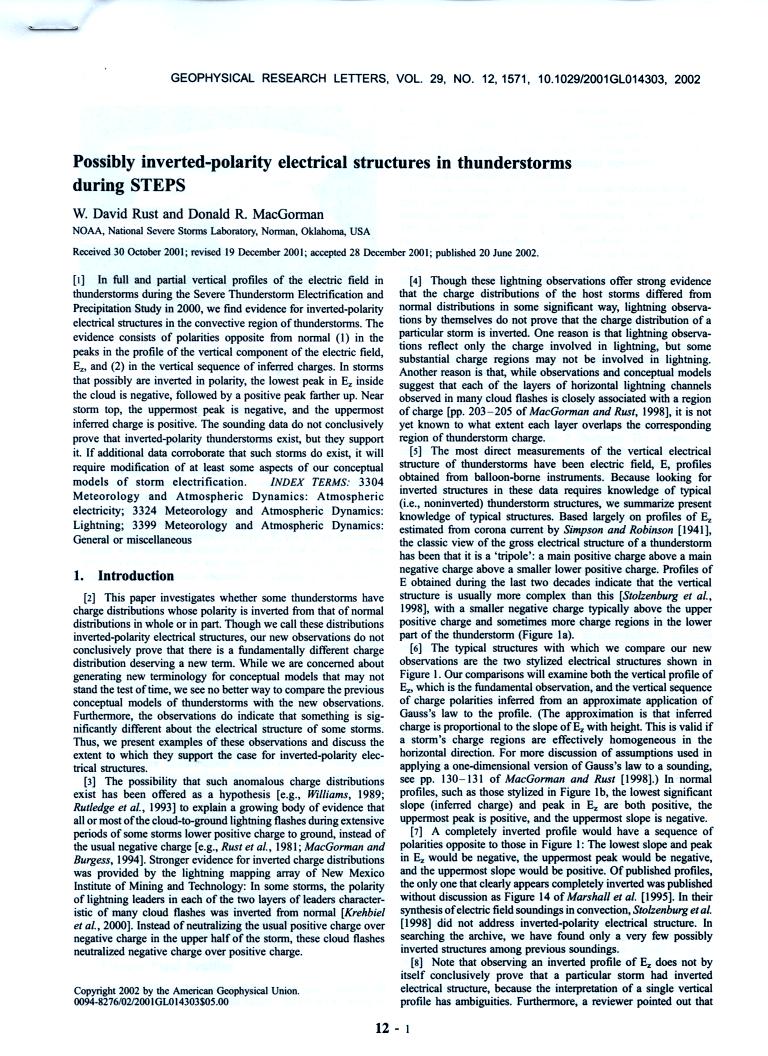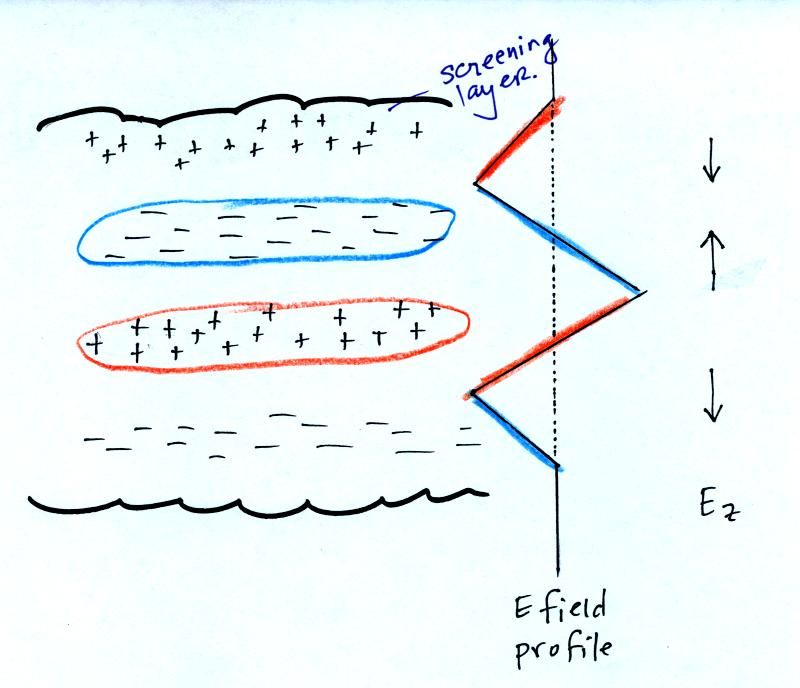Thursday Feb. 19, 2009
Homework #2 was returned today together with some solutions. A
couple of points were discussed at the beginning of class. Here
are the homework solutions:
We will
finish up cloud electrification processes today. We covered the
convective process at the end of class on Tuesday. We will start
with the inductive process today. In this process an existing
(initially fair weather) field induces charges in precipitation
particles.
Charge is neutralized during the collision and the two particles
come away with net charge of opposite polarity.
The
non-inductive process, also called the Reynolds, Brook, Gourley process
is generally thought to be the mechanism responsible for the initial
electrification of thunderstorms. The process is shown in general
terms below. We will look at some of the details in a little more
detail later.
Basically graupel collides with a snow crystal and then depending
on the environmental temperature, the graupel ends up with - or +
charge and the ice crystal ends up with the opposite polarity.
The different sizes and fall velocities of the two types of particles
means they will tend to separate after the collision.
The following figure shows the experimental apparatus used to make the
initial measurements of charging (this was on a class handout).
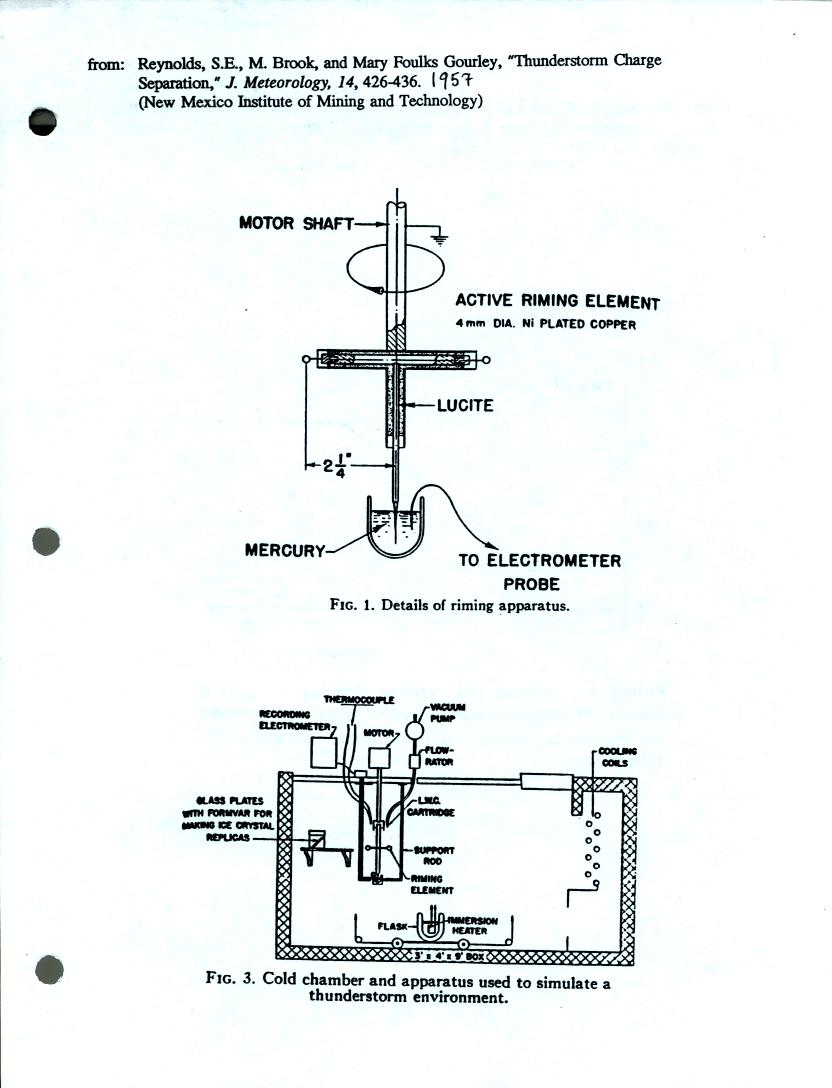
The two colliding particles are each thought to be surrounded by a
quasi liquid layer. The particle that is growing faster will have
a thicker quasi liquid layer and will transfer mass to the other
particle at the time of the collision. The particle that gains
mass ends up with negative charge.
The charge that ends up on the graupel particle depends on the
environmental temperature and on the cloud liquid water content as
shown in the figure above. We will looks at some of the details
thought to occur in regions A, B, and C.
In Region A the graupel ends up with positive charge.
In Region B, the ice crystal is growing more rapidly, transfer
mass to the graupel, and the graupel ends up with negative charge.
The polarity of graupel reverses again in Region C.
Here is the normal distribution of charge in a thunderstorm.
In this kind of situation, positive polarity discharges account for
only a few percent of the total number of cloud-to-ground
flashes. Most CG discharges begin in the main negative charge
layer.
This is the kind of E field sounding you might expect from the cloud
above.
Recently researchers were somewhat surprised to observe storms with 50%
or more positive CG discharges. This led them to wonder whether
the distribution of charge in the thunderstorm cloud might be different.
The front page from a publication reporting what appeared to be
inverted charge distribution in thunderstorms. Some of the
figures from this publication were distributed in class in a handout.
A schematic diagram of an inverted E field sounding.
The figure below shows the complex charge distribution in the
stratiform cloud portion of a mesoscale convective system (MCS).
